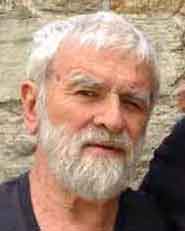All abstract political terms — especially those ending in “ism” — as used by particular individuals have to be defined. Otherwise the tendency is to psittacism — talking like a parrot without understanding.
Hannah Arendt, in her book, recognized only two recent governments as being totalitarian dictatorships — that of Adolf Hitler and Joseph Stalin. And because other writers include other dictators, such as Benito Mussolini and Mao Tse-tung as being totalitarian, it helps to clarify her use of the term “totalitarian” by understanding why she explicitly refused to use this label with them.
To begin with, we are talking about dictators. And it is the policy of typical dictators to eliminate criticism and opposition through censorship, incarceration, and execution. A higher level of control is achieved through spies and a secret police, as was the case in the 19th century especially with the Russian tsar’s Okhrana.
In these respects, Mussolini was a typical dictator. She writes: “… Mussolini, who was so fond of the term “totalitarian state,” did not attempt to establish a full-fledged totalitarian regime11 and contented himself with dictatorship and one-party rule.
11 Proof of the nontotalitarian nature of the Fascist dictatorshp is the suprisingly small number and the comparatively mild sentences meted out to political offenders. During the particularly active years from 1926 to 1932, the special tribunals for political offenders pronounced 7 death sentences, 257 sentences of 10 or more years imprisonment, 1,360 under 10 years, and sentenced many more to exile;12,000, moreover, were arrested and found innocent, a procedure quite inconceivable under conditions of Nazi and Bolshevik terror. See E. Kohn-Bramstedt, Dictatorship and Political Police. The Technique of Control by Fear, London, 1945, pp. 51 ff. [pp. 308-9]
More surprising is Arendt’s refusal to label Mao Tse-tung’s killing of 15 million Chinese (3% of the population) in 1949 as totalitarian. She writes: ” … after the disappearance of organized opposition, there was no increase in terror, no massacre of innocent people, no category of “objective enemies,” no show trials, though a great deal of public confessions and “self-criticism,” and no outright crimes.” [p. xxvi]
So, it would seem, that the term “totalitarian” is being used not specifically for killing opponents but for killing and controlling people for some other reason.
Here I want to interject my own succinct explanation of why Hitler and Stalin killed people which would warrant for distinct labels — though “totalitarian” does not seem quite appropriate.
Hitler killed people because of his fanatical perverted eugenic program, which included exterminating races, the deformed, and the disabled. Hitler viewed his mission similarly to that of the robot, Nomad, depicted in the TV series Star Trek, whose mission was to destroy “biological infestation.”
Here is a clip:
Stalin, on the other hand, was a fanatic of a different stripe. He had an obsessive paranoia which required a rationalization by having his victims confess their “crimes.” And his mind-set was like that of the United States when it waged a preemptive war against Iraq, or the rationalization of an Israeli soldier when he shoots a Palestinian child because the child may grow up to be a terrorist. Typical dictators kill only their enemies; Stalin killed and terrorized possible enemies as well.
P.S. Hannah Arendt believed that the best studies about Hitler were by Alan Bullock, Hitler, A Study in Tyranny, 1952; and Konrad Heiden, Der Fuehrer: Hitler’s Rise to Power, 1944. About Stalin, Boris Souvarine, Stalin, A Critical Survey of Bolshevism, 1939; and, Isaac Deutscher, Stalin: A Political Biography, 1949.
